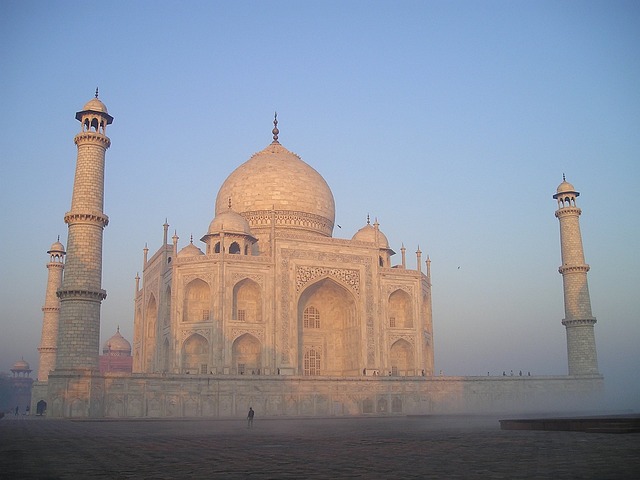
Today we will unearth the origins of Indian Jewry and the four types of Jewish communities that inhabit India. The Jews of India can be traced way back to the Ancient period and there are four populations namely; the Cochin Jews in the Malabar Coast, Bnei Israel near Mumbai, Baghdadi Jews in the city of Kolkata, and the Paradesi Jews who were spread out within the mentioned communities. Read further to learn more about each of these populations and their background.
If you wish to expand your knowledge about Jewish history during your travels, consider joining a kosher cruise with Kosher Riverboat Cruises. It’s so much more worthwhile than just visiting a tourist spot or staying in kosher resorts for a few days. Travel in style, experience fine kosher dining and daily services. Take your Jewish vacation to the next level and book a trip with us soon!
Cochin Jews
As seen in the Tanakh, there are a few passages that use several words that are associated or taken from Sanskrit and Tamil, which most likely result from the trade relations of Ancient India and Ancient Israel. The Radanites are known to have participated in European and Asian trade thus, there is a likely possibility that Jews have been visiting India and are potentially developing all kinds of settlements in the subcontinent. The primary settlement is known as the Cochin Jews.
A remarkable piece of early evidence regarding the Cochin Jews are a series of three copper plates that served as a kind of charter that was sent out by a local king to the Cochin Jews. This establishes the mood for the rest of the history of Cochin jewry. Joseph Rabban, a significant local Jewish individual, provided the Cochin Jews a variety of privileges, mostly symbolic in nature. For example, the Cochin Jews have the right to use a parasol which is usually for royalty only. Keep in mind that India is not homogenous, which means there are a wide range of cultures with different languages and faiths. Though it has a single type of geographic description, it is still a connecting territory as India is made up of a variety of civilizations. The Cochin Jews seemed to have a deep-rooted connection to traditional rabbinic Jewish thought. The settlement most likely evolved with the help of local indigenous leadership that birthed remarkable local customs.
During the arrival of the Portuguese, there was a significant change in the population. The Portuguese co-opted a few of the local Jewish elites during this time, Gaspar de Gama being one of them. He was said to be forcibly baptized by the Portuguese explorer Vasco de Gama. Gaspar then continued to become a proficient and successful translator for the Portuguese, assisting them when it came to negotiations regarding Indian culture and language. Then he went on to a rather brilliant career as a translator for the Portuguese helping them negotiate the eccentricity of Indian culture and language.
Bnei Menashe Jews
Another well-established Jewish community in India is the Bnei Menashe or “Children of Israel.” Unlike the Cochin Jews, the Bnei Menashe have undetermined legends of how they arrived. They settled in Mumbai during the medieval and ancient period. The Bnei Menashe was also under an indigenous spiritual leadership and they were not dependent on imported rabbis. This allowed them to develop eccentric cultural characteristics that aren’t usually seen in different populations.
During the early 19th century, a significant upsurge of Jewish activity emerged due to the arrival of the Christian missionaries. When the Christians arrived, they brought with them more exposure to the jewish background while attempting to spread the Christian doctrines. This intrigued the Bnei Jews and asked the Christian missionaries to teach them Hebrew. Thus, they became much more proficient in the language. This urged them to study more Tanakh, Mishnah, and Talmud teachings. At the end of the day, the Bnei Jews built a strong connection with the Jews around the world. During the 20th century, there was an influx of Bnei Israel to make aliyah, the immigration of Jews to Israel.
The Baghdadi Jews
Another type of Jewish population in India is the Baghdadi Jews. The Baghdadis were considered a major population of Jews who started to migrate to the Indian subcontinent in order to participate in international trade. Eventually, the Baghdadi Jews embarked on establishing strong footholds there. A lot of other Jews in India started to fuse together around the Baghdadis. Generally, they are considered as Sephardim, even though Sepharad is only associated with Spain. Nonetheless, a range of communities from the Middle East call themselves Sephardim in order to separate themselves from Ashkenazim.
Paradesi Jews
Lastly, another Jewish population in India is the Paradesi Jews. In some ways, they are similar to the Baghdadi Jews. However, they originated from different parts of the Middle East. “Paradesi” means “foreign,” since the Paradesi Jews came from different foreign countries instead of the local indigenous populations in India. A prominent figure in the establishment of the Indian community is David Sassoon while his sons contributed to the development of the economic infrastructure of Baghdadi Jewry.
